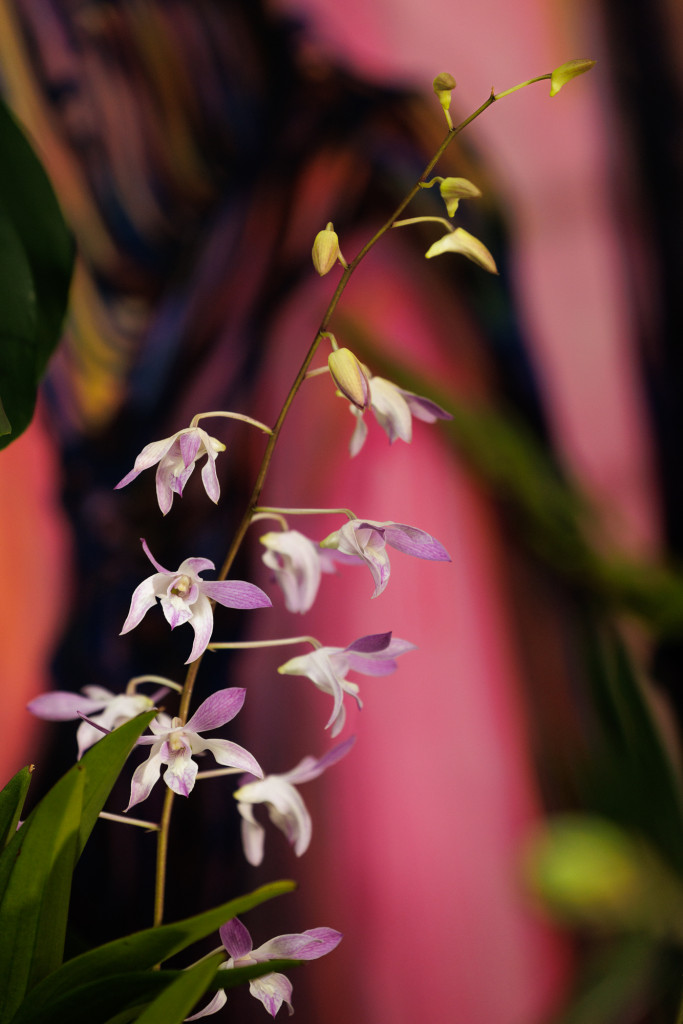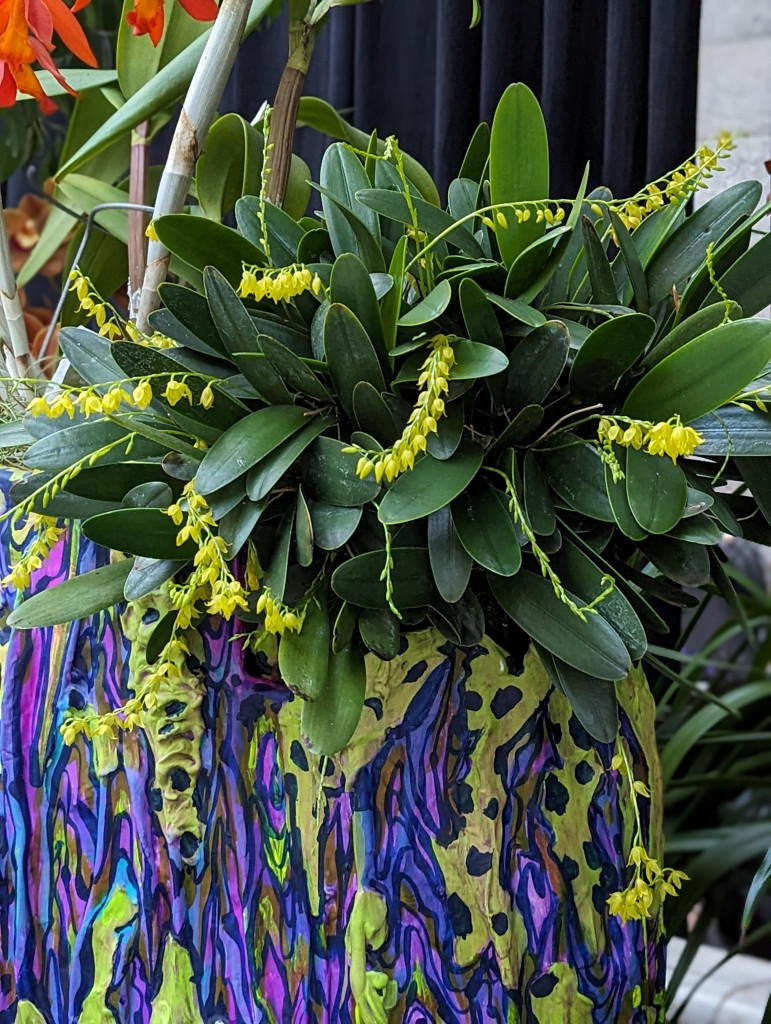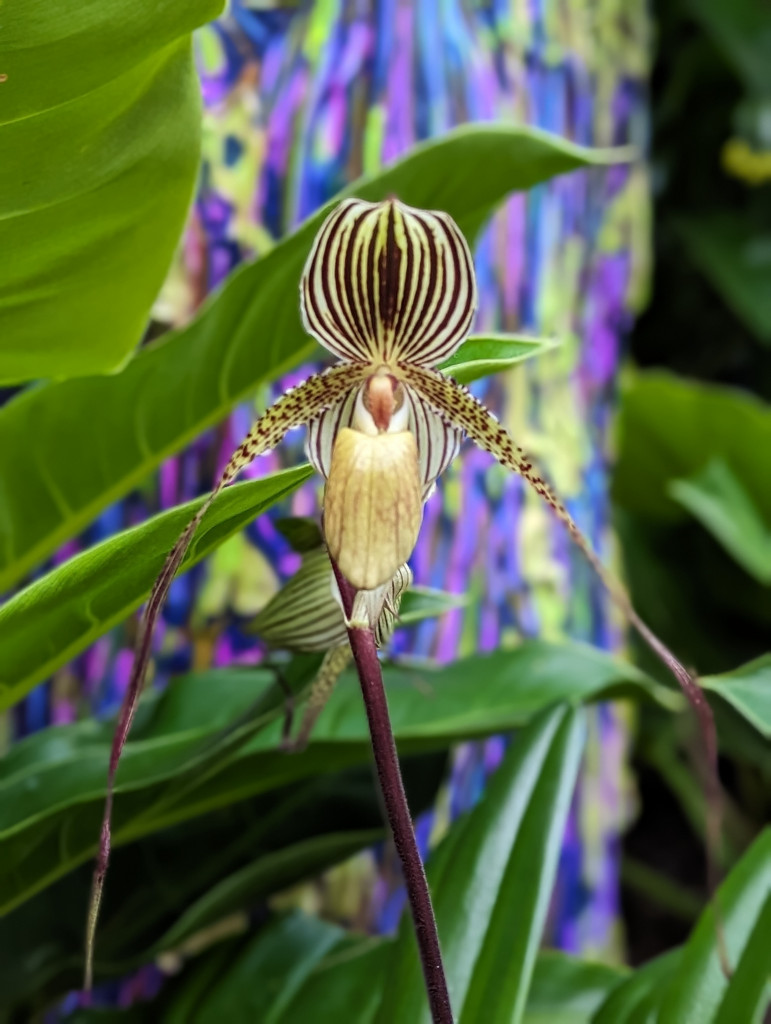Orchids form close relationships with the animals in their habitats.
Orchids depend on insects and other pollinators to transport pollen from one orchid to another. Cross-pollination helps orchids produce more viable seeds.
In return, orchids benefit insects. Some orchids supply insects with nectar. Some provide a more specialized reward. Euglossine bees gather volatile ‘perfumes’ from the large and showy flowers of Coryanthes, Catasetum, or Stanhopeaorchids which they combine to attract mates. These powerful scents enable male orchid bees to attract females while at the same time warding off other males.
Smithsonian Tropical Research Institute entomologist David Roubik has studied bees for over forty years. Euglossine bees support tropical life from the top to the bottom by pollinating numerous types of flowering plants. Many tropical birds and mammals then feed off those flowering plants – “all of which should say ‘thank you’ to the orchids for sustaining these very special bees,” says Roubik.
“When people disturb and destroy tropical forest they disrupt pollination systems,” says Roubik. Like orchidologists, entomologists trust that a greater understanding of how different parts of the environment interact can help us protect habitats for the future.
Las orquídeas establecen relaciones estrechas con los animales en sus hábitats.
Las orquídeas dependen de los insectos y otros polinizadores para transportar el polen de una orquídea a otra. La polinización cruzada ayuda a las orquídeas a producir semillas más viables.
A cambio, las orquídeas benefician a los insectos. Algunas orquídeas proveen néctar a los insectos. Algunas ofrecen una recompensa más especializada. Las abejas euglosinas recolectan “perfumes” volátiles de las grandes y vistosas flores de las orquídeas Coryanthes, Catasetum o Stanhopea que combinan para atraer a sus compañeros. Estas poderosas fragancias permiten que las abejas de las orquídeas macho atraigan a las abejas hembra al mismo tiempo que ahuyentan a otros machos.
El entomólogo del Instituto Smithsonian de Investigaciones Tropicales David Roubik ha estudiado las abejas durante más de cuarenta años. Las abejas euglosinas sustentan la vida tropical de arriba a abajo mediante la polinización de numerosos tipos de plantas con flores. Muchas aves tropicales y mamíferos luego se alimentan de esas plantas con flores, “todos los cuales deberían agradecer a las orquídeas por sostener a estas abejas tan especiales”, dice Roubik.
“Cuando la gente interviene en el bosque tropical y lo destruye, se alteran los sistemas de polinización”, dice Roubik. Al igual que los orquidólogos, los entomólogos confían en que una mayor comprensión de cómo interactúan las diferentes partes del medio ambiente puede ayudarnos a proteger los hábitats para el futuro.





